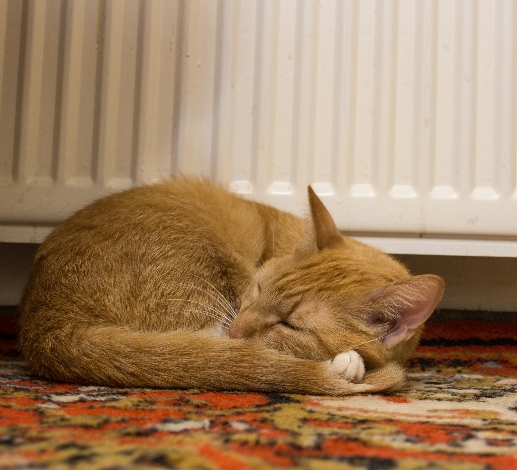Winter cycling guide
Winter cycling guide
Cycling in winter can be great fun, here are 9 tips to keep you safe on the roads in the colder months.

During the cold and dark months, it can be hard enough to leave the warmth of your bed, never mind braving the weather to go for a cycle! However, cycling can be a great way to keep fit over winter and it can also save you money on transport costs.
Here are our top tips to keep you safe and warm when cycling in more difficult conditions.
Top tips to keep you safe and warm when cycling in more difficult conditions.
During the cold and dark months, it can be hard enough to leave the warmth of your bed, never mind braving the weather to go for a cycle! However, cycling can be a great way to keep fit over winter and it can also save you money on transport costs.
Winter weather in Scotland can be notoriously changeable so it’s best to prepare for all conditions in advance.
Check the weather forecast before you set off on your journey and dress accordingly. Even if the forecast is blue skies, we’d recommend packing a light waterproof to avoid being caught out by a sudden downpour!
Keeping your head, hands and feet toasty will make your winter cycle all the more enjoyable.
A pair of thick waterproof gloves will ensure your hands are protected from icy winds and rain. We’d advise that you test out using your brakes and changing gear with them on before setting off to ensure you still have enough flexibility.
For footwear, aim to wear waterproof shoes or trainers that have a good grip to avoid your feet slipping from the pedals. We’d also recommend a thick pair of socks, preferably not made from cotton as it absorbs moisture and traps it next to your skin. You may also want to pack an extra pair in case you encounter any deep puddles along your route.
When it comes to keeping your head warm, a cosy knitted hat will work well under your helmet, just make sure it doesn’t get in the way of your eyes. You might also want to wear a snood or cycling balaclava on days when the wind is particularly chilly.
Even on the coldest of days, you might find yourself getting too hot when you cycle; especially if your route has a lot of hills to tackle!
The key to avoiding overheating is wearing light layers. Multiple light layers allow you to add or remove items as necessary and not become too hot or uncomfortable.
A good quality waterproof is essential for keeping dry on wet days. Be wary of labels that advertise jackets as ‘shower-proof’ as these are unlikely to offer much protection against heavy rain. Investing in a good quality waterproof jacket will also save you money in the long term.
Make sure you care for your jacket correctly using products designed for this purpose instead of standard detergents.
The longer winter nights mean you might find yourself cycling in the dark more than you usually do. Be sure to make yourself visible to both pedestrians and other road users.
Wear some high-vis clothing if setting off early in the morning or as it’s getting dark and always check your lights are working before you leave.
Keeping your cycle in good condition is advisable all year round but is especially important during the winter months.
Try to get into the habit of wiping down and drying off your cycle after you get home to remove any dirt, grit or salt you’ve picked up along the way. You might also want to use some WD40 to get rid of excess moisture. If you’re feeling extra thorough, you can add some bike oil to your chain and gears to keep them running smoothly.
Be sure to keep an eye on your tyres too and replace them if the tread is looking thin. These are important to prevent you from skidding on slippery patches!
Even if you’re an active person, it can take your muscles that extra bit longer to warm up on a cold day. Try to do a quick warm up at home before you leave. Some simple stretching and light cardio exercises will do the trick.
Ease yourself into your cycle by starting off a bit slower than you normally would. It might be a good idea to allow extra time and cycle at a more relaxed pace for your whole journey. This will help you avoid getting too sweaty which can make you feel clammy and uncomfortable once you stop and cool down.
It’s also the safer option in uncertain conditions as you’ll be able to keep control better if you come across ice or snow unexpectedly.
Often when we cycle on the road, we feel the urge to stay close to the kerb to avoid motorists. However, in winter this could prove dangerous.
This area of the road can become a sludgy mess of fallen leaves and slush at this time of year. Visibility on the road edge is also less clear.
It will be far easier and safer to stay in the middle of the road forcing cars to give you more room if they choose to overtake.
If you’re apprehensive about road cycling, try finding a cycle path on the National Cycle Network instead.
Find a cycle pathWinter weather creates challenging conditions. The key to mastering cycling through them is to avoid panicking as this can cause you to lose control.
We appreciate this is easier said than done but try to remember these key tips:
- When cycling on snowy paths, keep a slow pace so you can come to a stop naturally. If you need to use your brakes, only use the back brake, and squeeze gently.
- If you run over ice, try to avoid braking as this can cause you to skid which may result in a fall. Try to keep steering straight and stop pedalling so you aren’t building up any further momentum.
- Be wary of the low winter sun. Pack sunglasses to make sure your vision isn’t impaired.
- Always wear a helmet. This is an essential cycle item all year round, but it is especially important in winter.
- Winter cycling can be great fun but should always be practised with care. If the weather is too extreme or you’re just not feeling confident on the day, don’t feel any shame in taking the bus instead!
Latest news and case studies
We have articles, blogs and case studies covering topics ranging from home energy tips to low carbon travel, and business advice to installing renewables.

Save energy while cooking this Christmas

Stay warm at home for less



